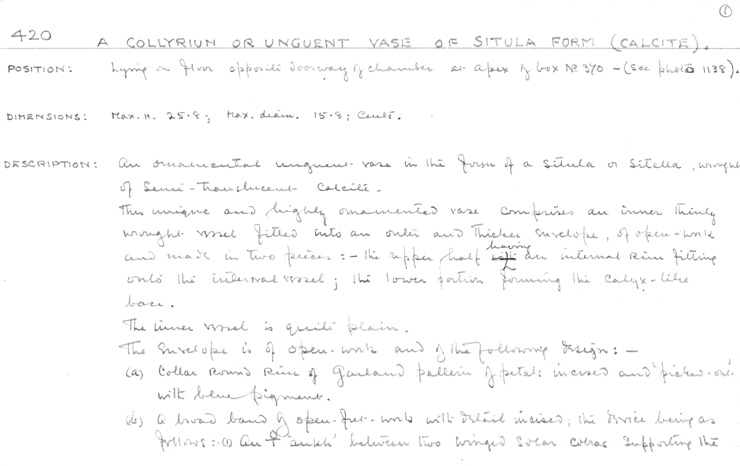Handlist description: Collyrium or unguent vase of situla form (calcite)
Card/Transcription No.: 420-1
420 A COLLYRIUM OR UNGUENT VASE OF SITULA FORM (CALCITE). 1POSITION: Lying on floor opposite doorway of chamber at apex of box No. 370 - (see photo 1138).
DIMENSIONS: Max. H. 25.8; Max. diam. 15. 8; cents.
DESCRIPTION: An ornamental unguent vase in the form of a situla or sitella, wrought of semi-translucent calcite. This unique and highly ornamented vase comprises an inner thinly wrought vase fitted into an outer and thicker envelope, of open-work and made in two pieces: - the upper half having an internal rim fitting onto the internal vessel; the lower portion forming the calyx-like base. The inner vessel is quite plain. The envelope is of open-work and of the following design: - (a) Collar round rim of garland pattern of petals incised and 'picked - out' with blue pigment. (b) A broad band of open-fret-work with detail incised, the device being as follows: (1) An <> 'ankh' between two winged solar cobras supporting the
